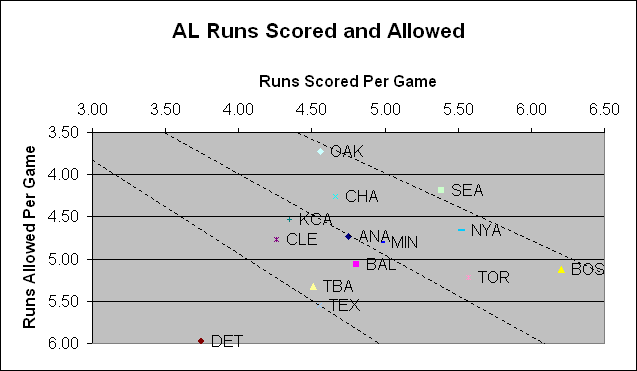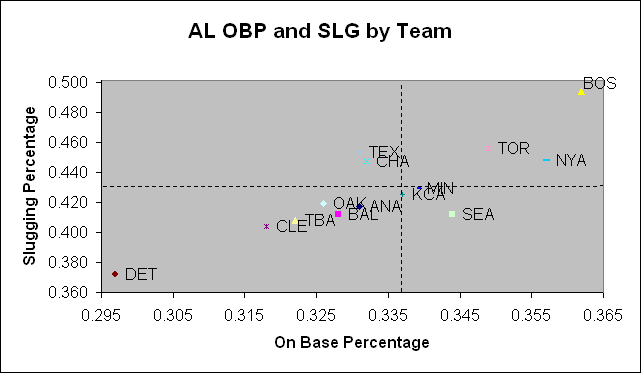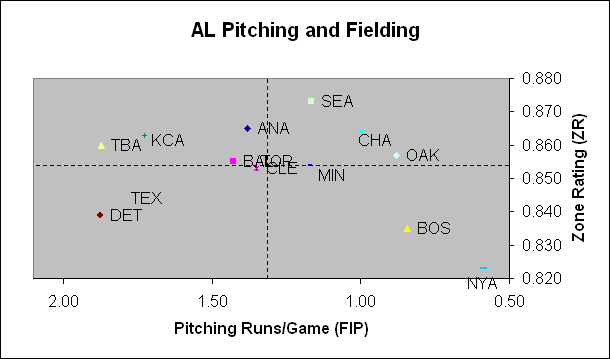
| Comments | How to Read this Graph |
| August 24, 2003
If you flip through the graphs from earlier in the season (try the above links; it's fun to do) you'll see that there really hasn't been a lot of movement among the league's top teams, outside of New York's fantastic start and the Red Sox recent offensive slide. Among other teams, however, you can see the White Sox improve their standing both on offense and defense. Minnesota has stabilized after a horrid June and Texas has been climbing out of the cellar. Somehow, the Tigers have managed to avoid falling off the graph altogether. To add insult to injury, they also have the biggest deficit against their Pythagorean projection. | |
| Team | Wins +/- |
| ANA | -4.81 |
| BAL | -3.79 |
| BOS | -0.89 |
| CHA | -1.25 |
| CLE | -2.28 |
| DET | -3.82 |
| KCA | 3.24 |
| MIN | 3.09 |
| NYA | 5.81 |
| OAK | 0.90 |
| SEA | -4.05 |
| TBA | -3.74 |
| TEX | 3.82 |
| TOR | -2.08 |

